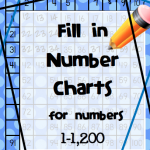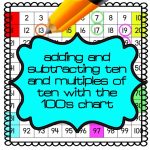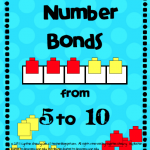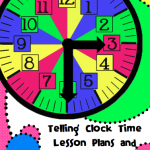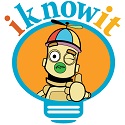How Do You Keep Your Retired Bulletin Board Materials Organized?
After you take down each bulletin board, keep the border, pictures, and other materials in a medium sized plastic tub or box. Label the boxes by months. Keep your bulletin board tubs stored in your room by month and add to the boxes when you find additional decorations throughout the year. When the season comes for your bulletin board the following year, you will easily find all of the materials you need stored in your organized tubs.
You Can Use this Fabulous Tool to Build Word Walls
Post-it definitely had teachers in mind when they developed these repositional lined sticky notes. These sticky word strips are great for word walls, to help highlight a word on anchor charts, or to label items in your classroom. This tool allows teachers to easily create a print rich environment. They are also colored, so they easily allow for coding the stickies by topic. For example all life science words could be green. Since they are repositional, I like to leave them on my white board while we are learning the concept, so I can write a definition or draw a picture with each word. Then move them over to the word wall later when we aren’t currently using them. I can always move the words back if we work on them again. I highly recommend these to anyone wanting to teach vocabulary! Target carries these and I usually can pick up a package for about $5 before school begins.
Try These Compelling Fall Pumpkin Activities…
I so look forward to a crisp fall day after the humid triple digit temperatures we have had in the south. I am already wanting to hang my fall wreath on the door! Maybe it will hasten fall weather. 🙂 With the fall weather I always think of this pumpkin unit I taught with my precious third graders in which the students all did math investigations with pumpkins. The following are pictures of the activities we did with the unit. I also made the lessons available on Teachers Pay Teachers. I added one lesson to it –pumpkin lines– to make it a full week unit. We measured pumpkin’s weight, circumference, height, and counted the seeds (eeew so messy, but fun!) Take a look below.
Are You Using Fabric to Decorate Your Classroom?
If you are opting to buy fabric to spruce up your dull concrete block classroom, then try out JoAnn Fabric stores. They offer a 15% discount to teachers who show their school ID. Fabric can be used to create a warm, homey, classroom atmosphere for curtains or bulletin boards. The great thing about using fabric for bulletin boards is that once it is cut, you can easily use it again the next year without having to re-cut large bulletin board paper–what a time saver!
Even Some Veteran Teachers Haven’t Considered Teaching Procedures In This Depth…
Do you know a teacher who has his or her classroom very well behaved no matter what crop of children they receive? Nearly every child is following directions in these classrooms for the majority of the school year. You could walk into these classrooms later in the year and wonder what their secret is. The secret lies in the first few days and weeks of school. The first few days of school are SO crucial. If a teacher allows and ignores whispering in the hallway now, then students will be yelling in the hallway by Christmas. You must “nip it in the bud” my college professor once told me. If students don’t do EXACTLY what you want the first few days of school, you must make them practice it over and over again until you get EXACTLY the behaviors you desire.
I was so proud of my novice teacher today! I mean smiling 1000 watt smile with all of my teeth showing on the inside. I had a long talk with her on the phone before our first day of school. I reminded her to practice every single procedure until she got the desired behavior she was looking for. I also told her to be specific about every detail when she explained each procedure.
In our conversation I said “Remember every behavior that got on your nerves last year,”.
She said, “mhum.”
I posed this question to her, “What happens when your rule is “STAY IN YOUR SEATS” and a child drops his or her crayons box? All of the students’ eyes follow the spewing of crayons while you are teaching. About six little feet patter across the floor to “help” the poor student who has just dropped the entire contents of his precious school box. You stand there not knowing whether to warn these “helpers” since they were only “helping” or thank them because they were assisting their peers.”
To hold students accountable for every action, a great teacher has foreseen the inevitable behavior of children and will address these actions before they happen. If a situation arises that hasn’t been addressed, the teacher will make a learning experience from it.
So, the reason for my 1000 watt smile : D is that my novice teacher was doing all of these things exactly like we discussed. As I walked in her room today I was so impressed of how she was having her students practice every procedure until they mastered it to her standards! She quickly dished out consequences for inappropriate behavior, and all children were attentive! I could take veteran teachers in her room into learn from such a model classroom! BRAVO!
Free Numeral Cards
At the beginning of the school year, there are many procedures, routines, rituals, and rules that need to be taught. If you are planning on teaching cooperative group procedures and norms, these numeral cards may be used with many different types of games and activities such as Close to 20, Close to 100, Close to 1000, Place Value Games and the like. I have searched for numeral cards on the internet before and had a difficult time finding some, so I had to make my own. You are welcome to download and use these. Just click the link.
Have You Algebrafied Your Word Problems?
Take a simple math textbook word problem and ALGEBRAFY it. (I love that new word!) A presenter at the NCTM algebra readiness conference used it. She showed us how to take a simple math word problem and provide other numbers as well as the one in the problem for students to solve the problem multiple times. Then students are able to make a generalization about the problem. For example:
Bill’s Airbrushed T-shirts is giving customers a 20% discount on all T-shirts. Find the discount on a T-shirt that had an original price of $12.
In addition to the textbook version, allow students to find the pattern when finding a discount on other prices of shirts.
Find the discount of a shirt that was originally priced at $13, $14, $15, $20, $50
If students write these in an organized way or use a table to calculate these amounts, they would easily see a pattern.
$12 x .20 = $2.40
$13 x .20 = $2.60
$14 x .20 = $2.80
$15 x .20 = $3.00
$20 x .20 =$4.00
$50 x .20 = $10.00
Math is all about finding patterns. Students can easily see several patterns above. Some will see the obvious pattern in the first few equations in which each product gains 20 cents. Students will also hopefully see the pattern of doubling the first factor and counting over two places to write the decimal. Then students can begin generalizing about multiplying any number by 20 percent. When students are able to generalize then the learning becomes their own personal discovery. Learning becomes fun again!
How Can You Make Almost Any Math Lesson Deeper?
I am currently at a regional NCTM math conference on algebra readiness. I am going to share one of the things I learned at the conference. Use conjectures while teaching math to make the task deeper. For example, when teaching the commutative property, have students find at least three pairs of equations with factors that have switched places and allow students to draw a conclusion.
3×4 = 12
4×3=12
7×6 =42
6×7=42
4×9=36
9×4 =36
Ask students what they notice about the factors that have switched places. Hopefully, students will say that the products are the same when the factors have switched places. Ask students if this is always true. Allow students to experiment with their conjecture by using other examples. Ask other students if they can prove this wrong. When all minds are settled on the conjecture and agree, then reveal the name of their conjecture as the commutative property. Teaching with this method of discussing conjectures allows students to take ownership of their learning and be involved in the process of discovering mathematical concepts. Less reteaching will occur and your teaching will be closely aligned with Common Core Standards.
Do you Have Procedures for Your Math Workshop?
As I mentioned before, specific procedures are critical to a successful classroom. Each time of the day has different procedures, for example, math workshop time. Do students know what to do when they gather on the carpet, what to do with manipulatives, how to work in cooperative groups, how to speak during their work time, and what to do when they need help? If students are given norms in these areas, then the teacher’s time is maximized for instructional purposes instead of behavior management. Below is another photo from the classroom I visited for a lesson study. I like how this teacher’s expectations are clear for carpet time in this poster.

